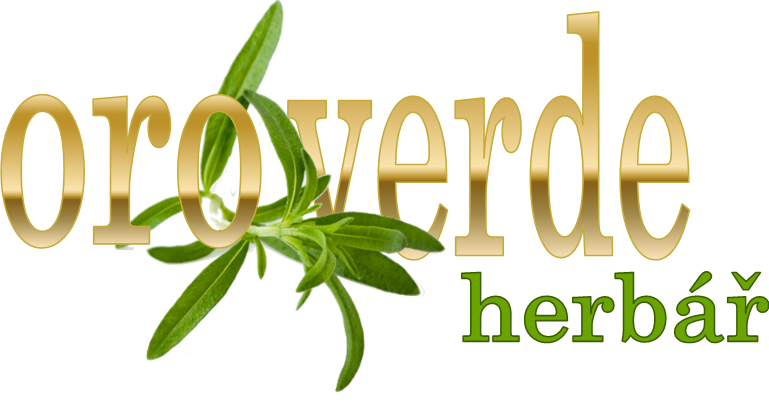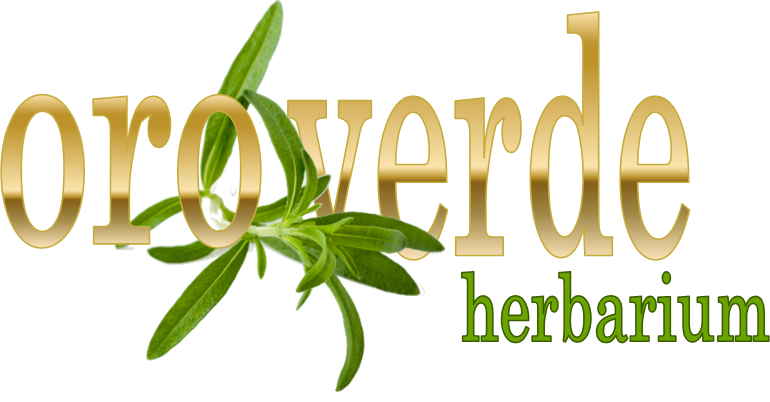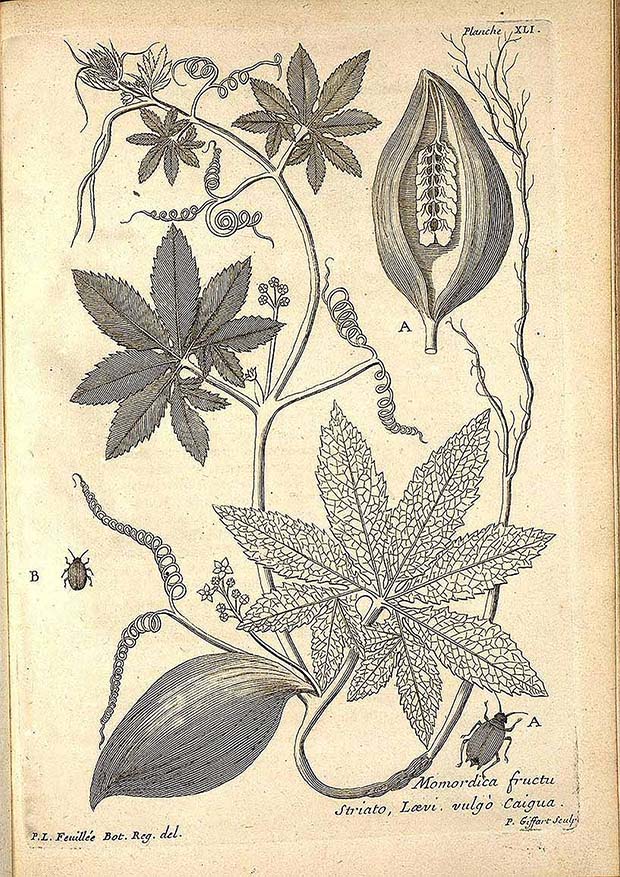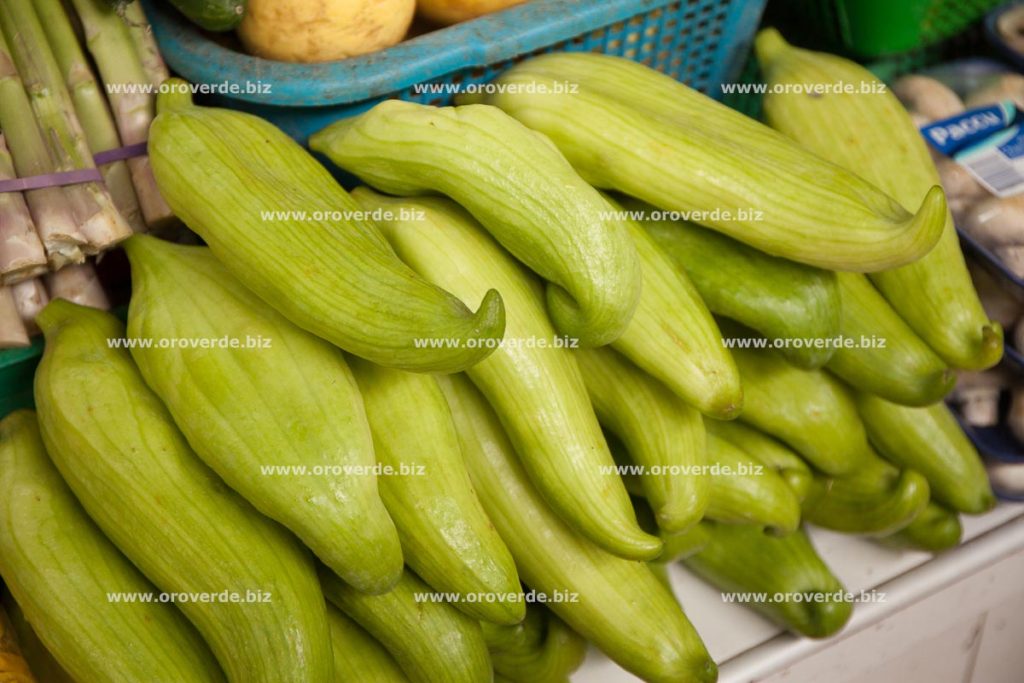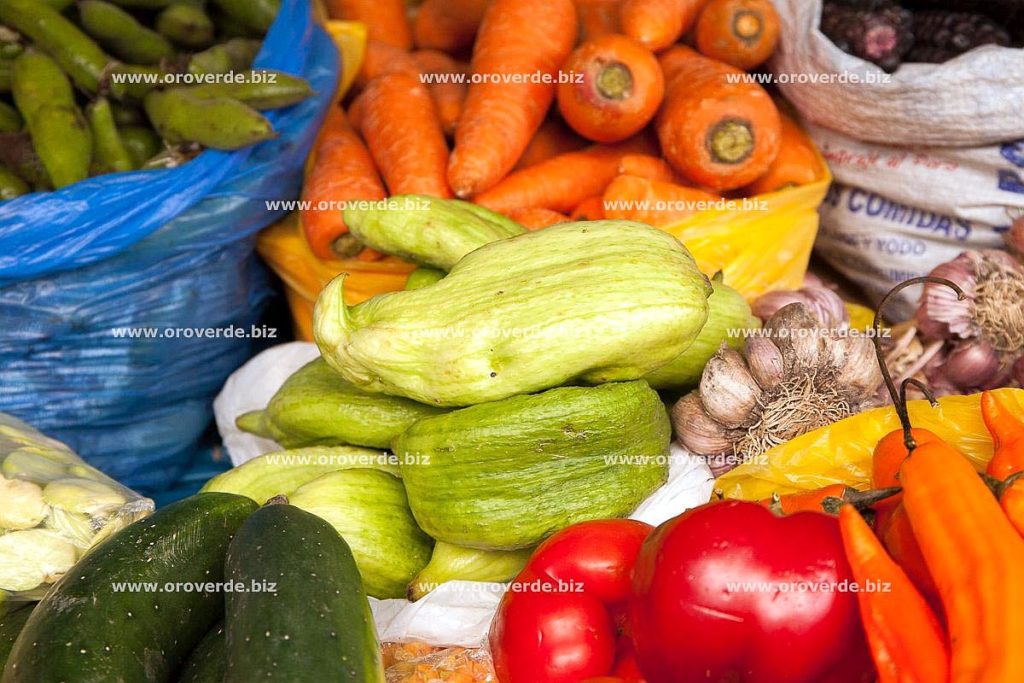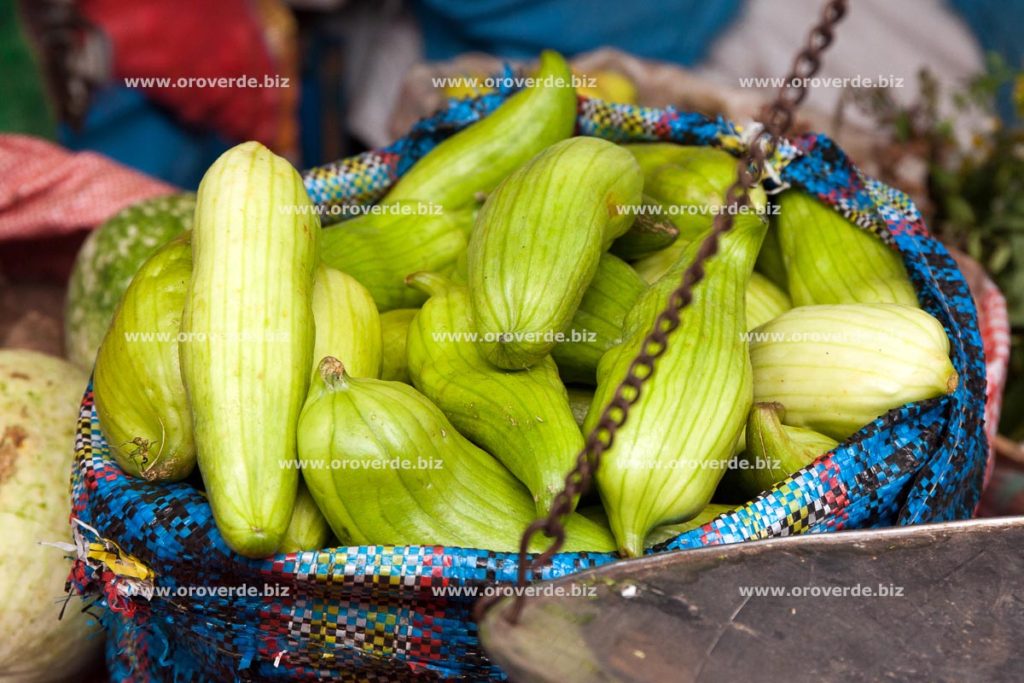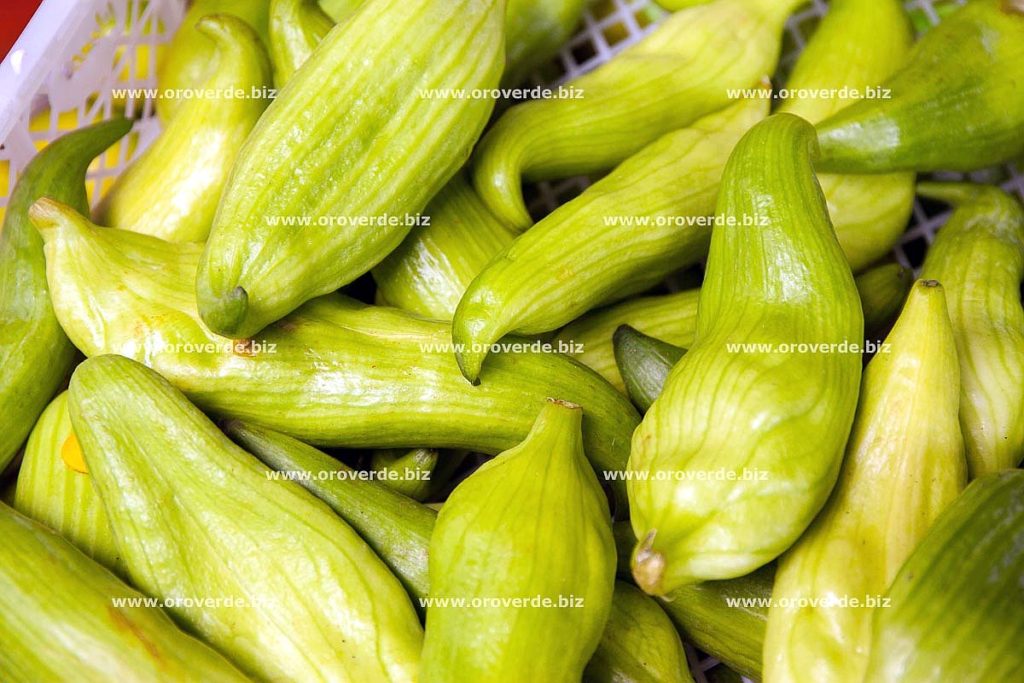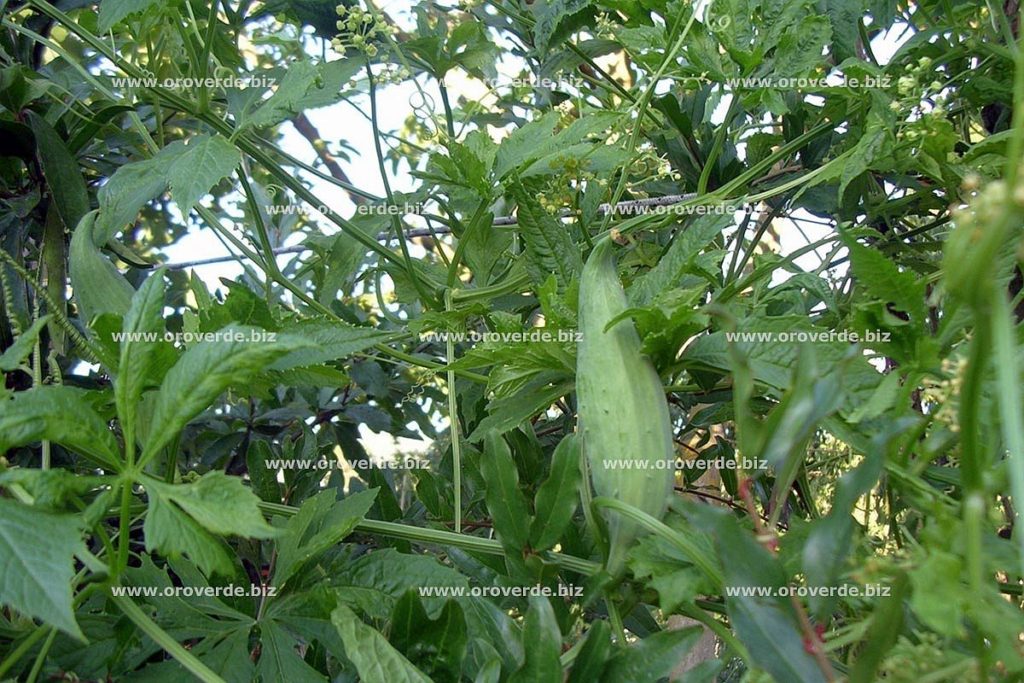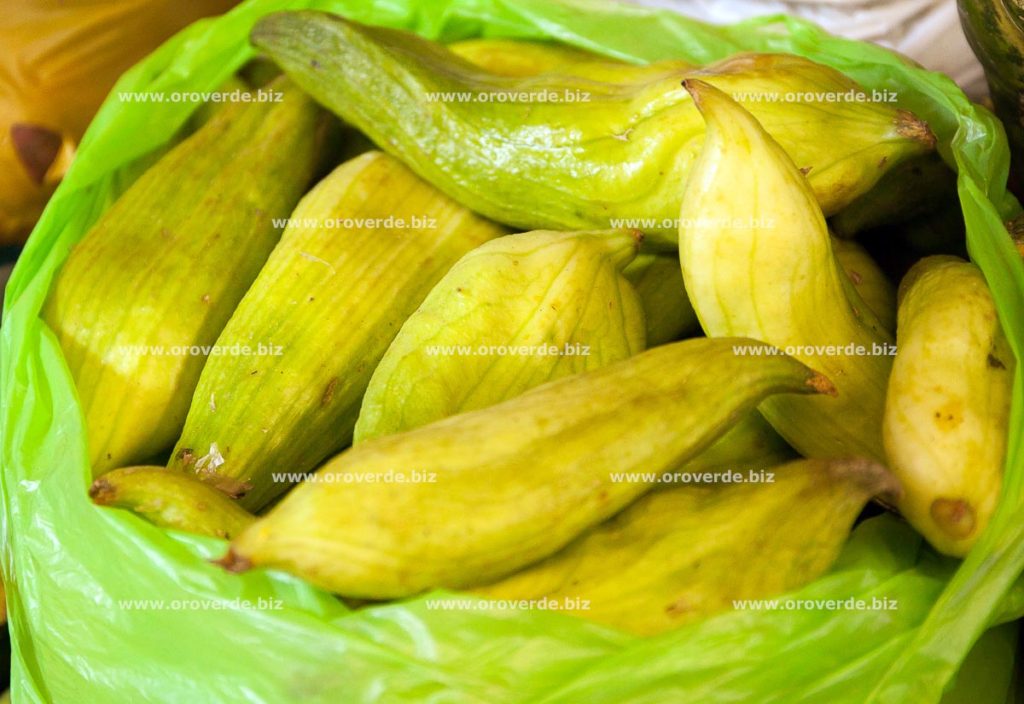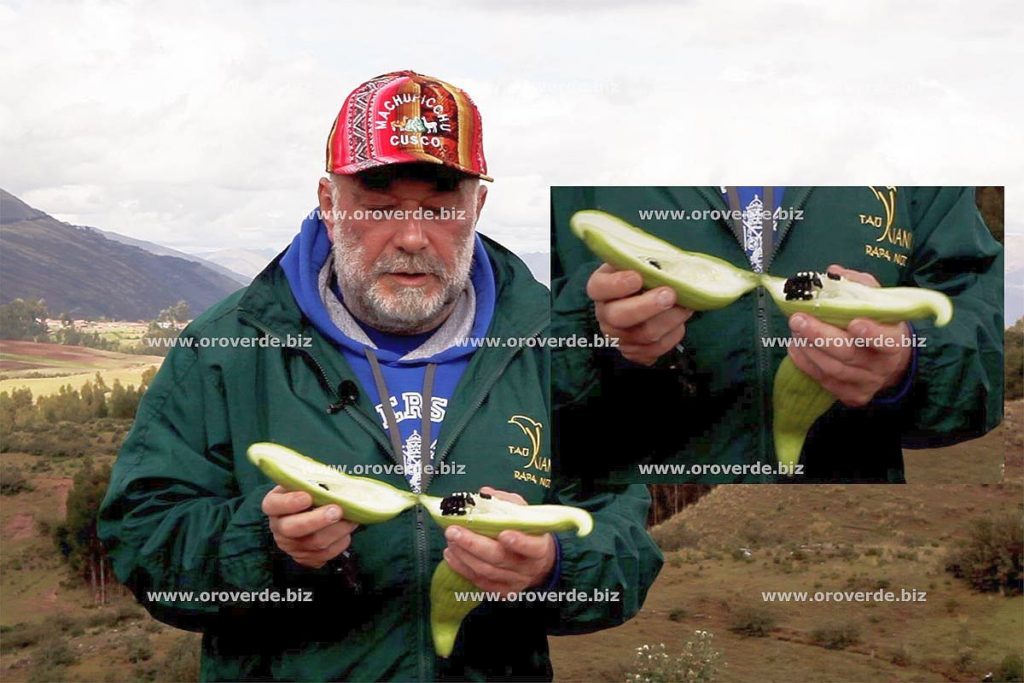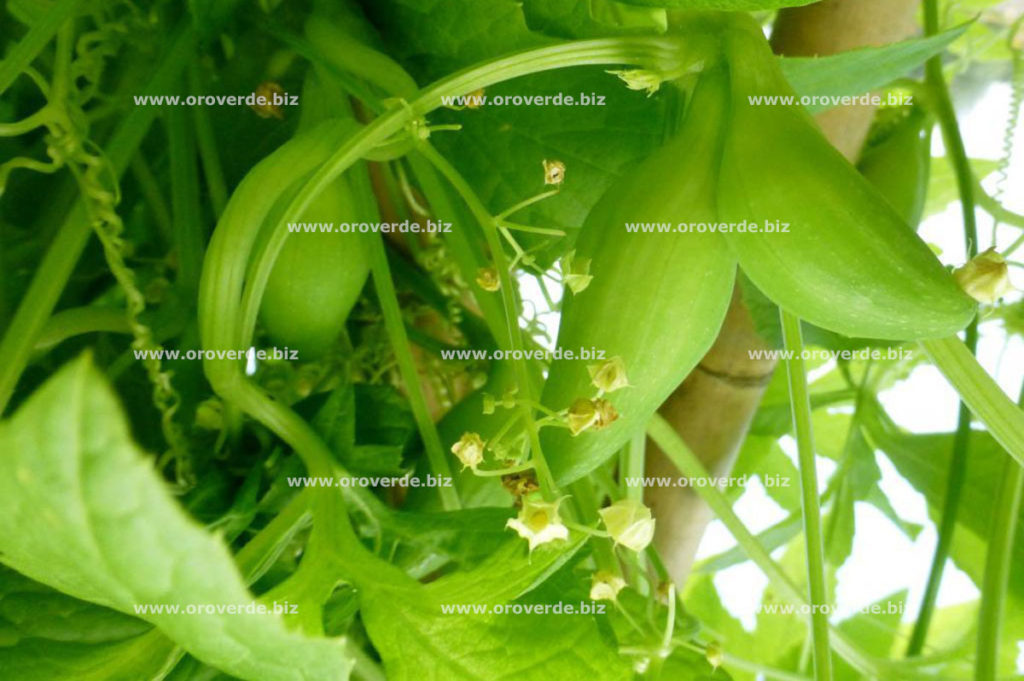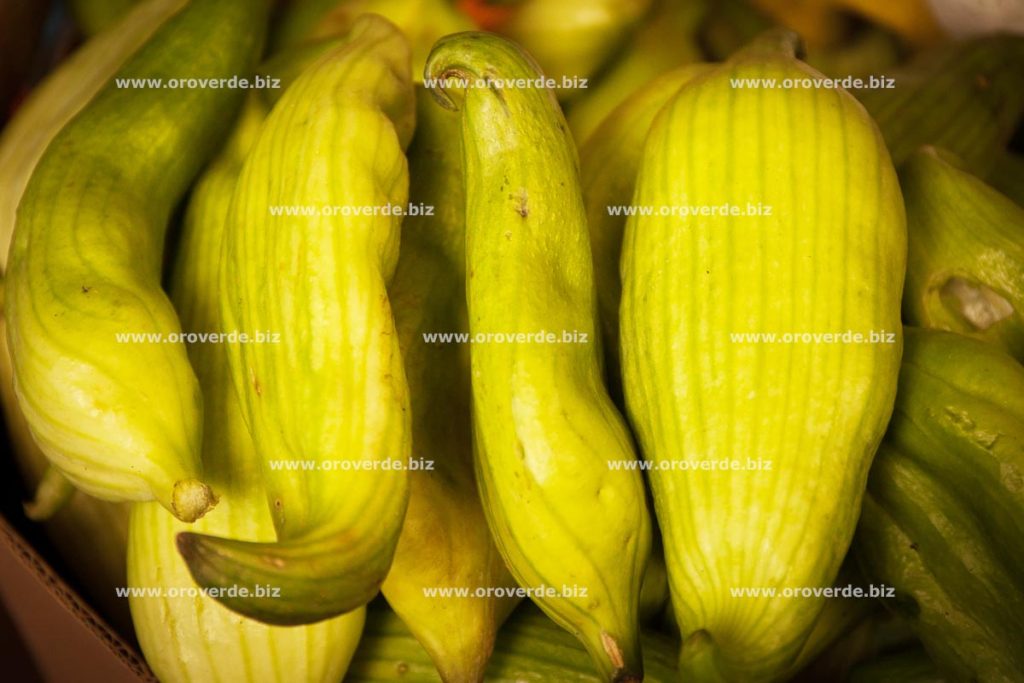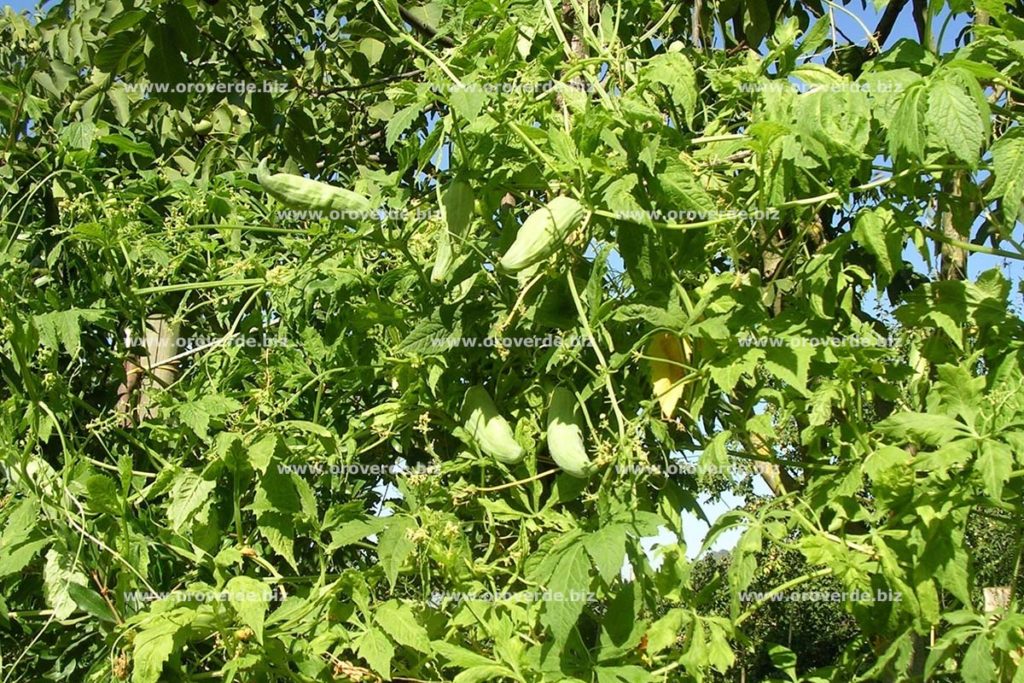It affects the following diseases:
Family: Cucurbitaceae (Cucumber (Pumpkin) family)
Genus: Cyclantera
Species: pedata L. Schard.
Common names:
achocha (quechua), achojcha, wild caihua, quishiu, caygua achoccha
Part(s) used:
Fruit with seeds and without seeds, leaf (Fructus cyclanterae cum semen; sine semen; Folium cyclanterae)
Description:
Annual, climbing herb, its stem can reach up to 5 metres in height. The stalk is thin, densely branched with outgrowths, which split up to five long twigs. The leaves are 6 – 14 cm long, lobed, entire with five to seven elliptical folioles with crenate edges. It is a common occurrence that the external lobes have another smaller lobes on their edges. The flowers appear in groups of ten to twenty. They are unisexual, tiny, yellowish white or greenish. The floral crown forms a pentagon, the cup divides in five lobes, markedly larger are flowers with pistils. Pentagonal androceum, all five stamens are linked in one column ending with a joint anther. Gynoceum with flat ellipsoidal ovary; the style ends in an irregular stigma.
The fruit has an oval-elliptical and oblate form, usually with round base and pointed tip. Its length ranges from 10 to 20 cm; the surface is very coarse and irregular with tiny thorns mainly in central part. The colour oscillates from dark green to white; beyond that oblong spots appear throughout the surface of the fruit. Mezocarp is thin and delicious, of green colour, endocarp is white and spongy. Ripe fruits crack shooting out the seeds and simultaneously producing a loud sound. The seeds lay in two rows in placenta and are square, black and coarse. The fruit inside is empty (hollow) during the period of maturity, or contains free particles of placental tissue.
The plant grows in humid and warm climate. Huanuco: Pampayacu and Cochero (2100 m above the sea level); Cajamarca, Tumbes: Hacienda La Choza (300 m above the sea level); Piura; San Martín: Tarapoto; Ayacucho (1000 m above the sea level); Loreto. It is wide-spread from Bolivia to Mexico.
The plant is indigenous in Bolivia and is cultivated by natives in Peru like fruit intended as common food. Caihua has fleshy and cool skin, used like a wrap for meat filling or for other food. The leaves are edible too and the roots are used for teeth cleaning. The fruits are pickled in a similar way as cucumbers.
Ethnomedical uses by native communities: in a raw state it is a very good remedy for diabetes; it is used in cases of respiratory diseases and its juice is applied as a treatment for otitis. Also traditional is its use for reduction of cholesterol level in blood and as a diuretic – it is prepared as a brew of two fruits without seeds in one litre of water. Frequently the leaves are used externally as an antiphlogistic agent (anti-inflammatory effect), being placed on inflamed surface. The anthelminitic (antisaprophitic) effect is achieved by direct consummation of 1 gram of crushed seeds.
Commonly used nowadays is hard (dried) fruit or a milled one in capsules for circulatory problems. Marked purgatory effect on arterial walls from cholesterol (in doses of 6 capsules of 200 mg a day) is mentioned. The effects of reducing blood pressure and also preventing atherosclerosis are mentioned too. These pieces of knowledge led to development of various preparations and galenic forms of the use of the C. pedata fruit as a pharmaceutical against the cholesterol and the high blood pressure.
An Italian study performed under the subject:
Lipidic profile of postmenopausal women – effect of Cyclantera pedata L. Schrad, to which 18 women in pre-climacteric and 24 women during post-climacteric period were enlisted, showed after 12 weeks of treatment:
- Reduction of the total blood cholesterol level by 22%
- Reduction of the LDL cholesterol fraction level by 33%
- Increase of HDL cholesterol fraction level by 33%
- Reduction of the triglyceride level by 18%
The results of the randomized (twice randomly performed) study with capsules of dehydrated (dried) fruit C. pedata with aim to explain the influence on lipidic fraction definitely proved the reduction of total blood cholesterol by 18,3%, LDL-cholesterol fraction by 23% and increase of HDL-cholesterol fraction by 42%.
Below we are presenting a summary of the mentioned study which we succeeded to obtain thanks to kind assistance by our Peruvian colleagues:
The study was carried out by University Cayetano Heredia in Lima:
The influence of the dehydrated Caihua (Cyclantera pedata L. Schrad.) on lipidic fractions of the middle-aged citizens.Present study was carried out in order to determine the influence of the dehydrated fruit C. pedata, administered orally in different doses during 12 weeks, on the level of lipides of middle-aged men and women in Lima (Peru). 60 monitored persons joined this study.After 12 weeks of treatment a reduction of the total blood cholesterol by 18,3 % was recorded, namely the reduction of LDL-cholesterol (low density lipoprotein) by 23% and increase of HDL-cholesterol (high density lipoprotein) by 42% and, furthermore, a significant drop of triglycerides in blood was recorded in the group which had been dosed 6 capsules in the morning before the breakfast.
In cases of hypercholesterolemia dosing of 6 capsules a day produced recovery (reduction) to normal level of the overall blood cholesterol of 82% of monitored patients. Similar results were also achieved in the reduction of LDL-cholesterol level.
These results justify the conclusion, that the dehydrated fruit of C. pedata is an adequate remedy for treatment of hypercholesterolemia and/or hypertriglyceridemia.
Atherosclerosis is the most frequent vascular disease causing death in the West and hyperlipidemia is one of the factors with fully documented responsibility for the origin of this disease. Besides hyperlipidemia and hypercholesterolemia, another of the risk factors of the atherosclerosis development is a high adhesion of monocytes to the arterial endothelial cells leading to the inflammations and production of atheromas. A high correlation between the number of deaths of coronary diseases and a high level of LDL-cholesterol rate to HDL-cholesterol (LDL / HDL) was established as well.
That is why the levels of blood cholesterol > 240 mg/dl, LDL-cholesterol > 150 mg/dl and HDL-cholesterol < 35 mg/dl were determined as the risks of origin of coronary diseases.
Not long ago it was referred to the fact, that the blood cholesterol reduction, and above all of its fraction related to LDL-cholesterol, is a basic precondition for the reduction of the number of deaths of coronary diseases. This motivated the pharmaceutical industry to search for substances reducing LDL-cholesterol (low density lipoprotein) and at the same time increasing HDL (high density lipoprotein). Among such substances (agents), besides others, belong chlofibrates, cholesteramine, nicotinic acid, gemfibrozil and fosinopril.
Besides pharmaceutical products and frequently used alternative methods, the diet is a primary and most important factor of the treatment of hyperlipidemia. Many natural products were combined for dietary use with various results. One of these natural products is Caihua, a plant widely used as a food among the inhabitants of Peru.
As a country with a considerable natural wealth, Peru uses a broad pallet of herbs to cure various diseases for hundreds of years already. Juan de Arona, for instance, refers to the use of the herb Caihua cultivated by the natives in Peru, raw as well as cooked, for the diabetes moderation.
This study was carried out to determine the effect of dried natural product, Caihua, on lipidic profile of men and women cured by this method for 12 weeks.
The results of this study indicate that the dehydrated Caihua is an adequate method of treatment in cases hypercholesterolemia and/or hypertriglyceridemia.
You can find an interesting instruction on Caihua cultivation in our conditions on website www.pelargonie.cz in the section “New submissions”.
Contraindications:
Are not mentioned.
Side effects:
Are not mentioned.
Traditional enthomedicinal uses:
hypocholesteric and diuretic: boil 2 seedless fruits in one litre of water, drink 3 times a day a cup or eat 3 times a day 2 grams of the fruit; antiphlogistic: apply a leaf on a place of the external inflammation; vermifugal: eat 1 gram of seeds 3 times a day.
More information you can look on the site about ordinary preparation of the herbal remedies.
Phytoterapeutic properties:
antiphlogistic, diuretic, hypocholesteric, hypolipidemic, vermifugal
Phytochemical composition:
3-beta-D glukosid, dihydroxitriptamin, galakturonic acid, lipoproteines, lipidic a albuminoid substancies, minerales and its salts (P), pektins, peptin,pikrin, sitosterol, carbohydrates, vitamins (tiamin, L-askorbic acid).
Source:
- Amazonian Ethnobotanical Dictionary, DUKE A.J., VASQUEZ R., C.R.C. Press, Boca Raton, USA, 1994, ISBN 0-8493-3664-3
- Diccionario enciclopedico de plantas utiles del Perú, BRACK EGG A., CBC – Centro de Estudios Regionales Andinos «Bartolomé de Las Casas» , Cuzco, Perú, 1999 , ISBN 9972-691-21-0
- Jihoamerické léčivé rostliny a jejich užití středoevropskou populací, DORAZIL M., ZF MENDELU, Lednice na Moravě, 2007
- Plantas Medicinales Nativas del Peru, PALACIOS VACCARO W.J., Concytec, Lima, Perú, 1997, ISBN 9972-50-002-1
- The Healing Forest, SCHULTES E.R., RAFFAUF R.F., DioscoridesPress, Portland (OR), USA, 1992, ISBN 0-931146-14-3
- Užitkové rostliny tropů a subtropů, VALÍČEK P. a kol., Academia, Praha, ČR, 2002, ISBN 80-200-0939-6
- Vocabulario de los nombres vulgares de flora peruana, SOUKUP J. SDB, Editoria Salesiana, Lima, Perú, 1975
